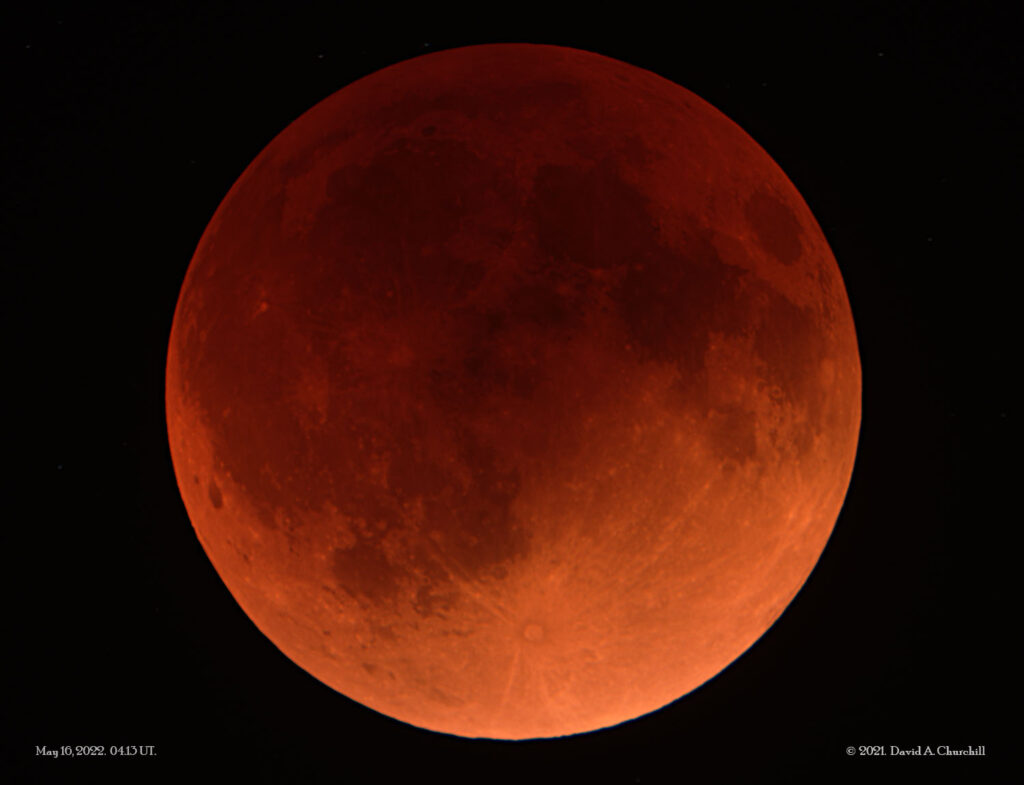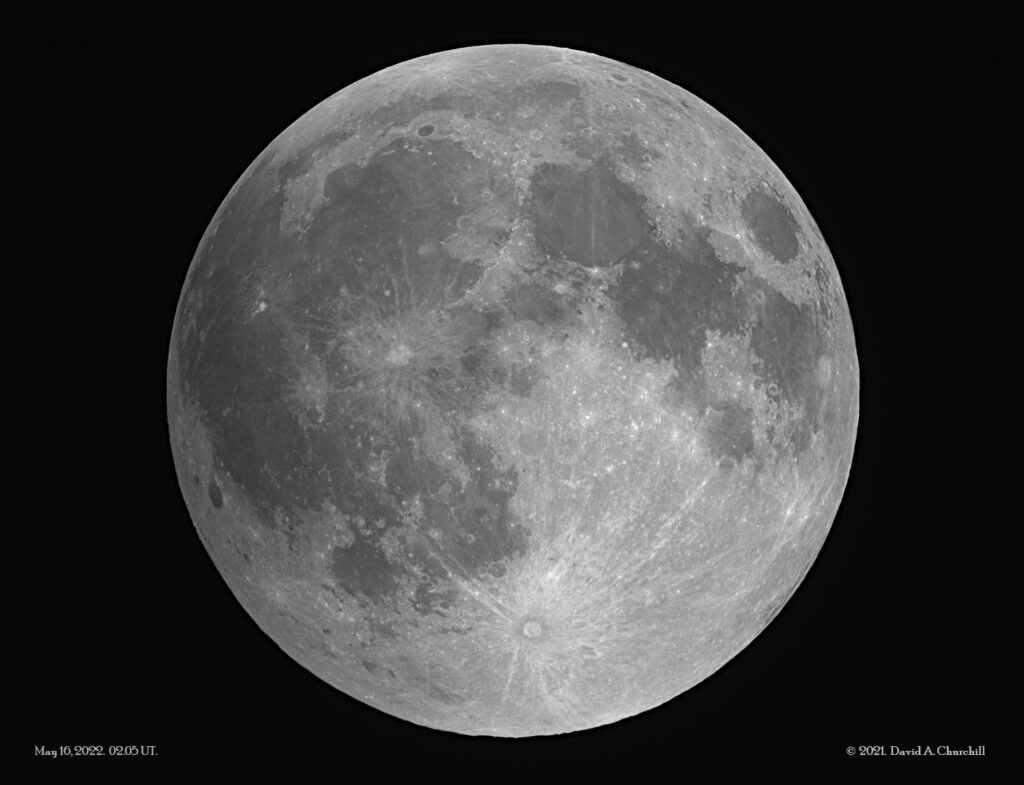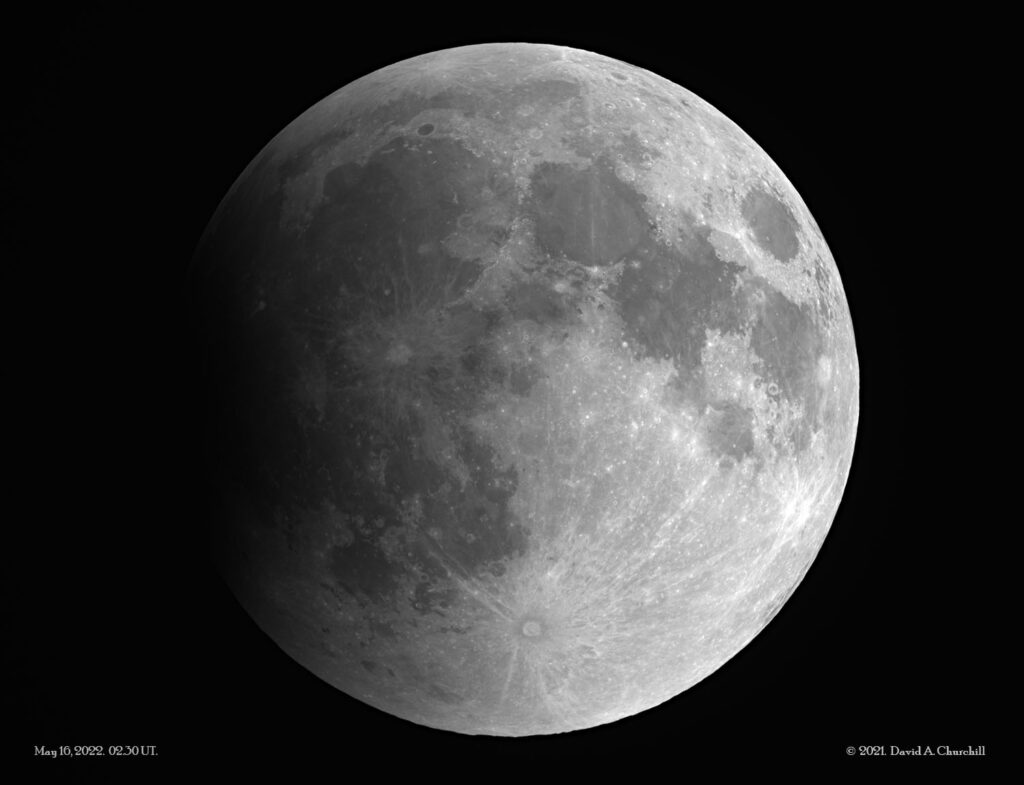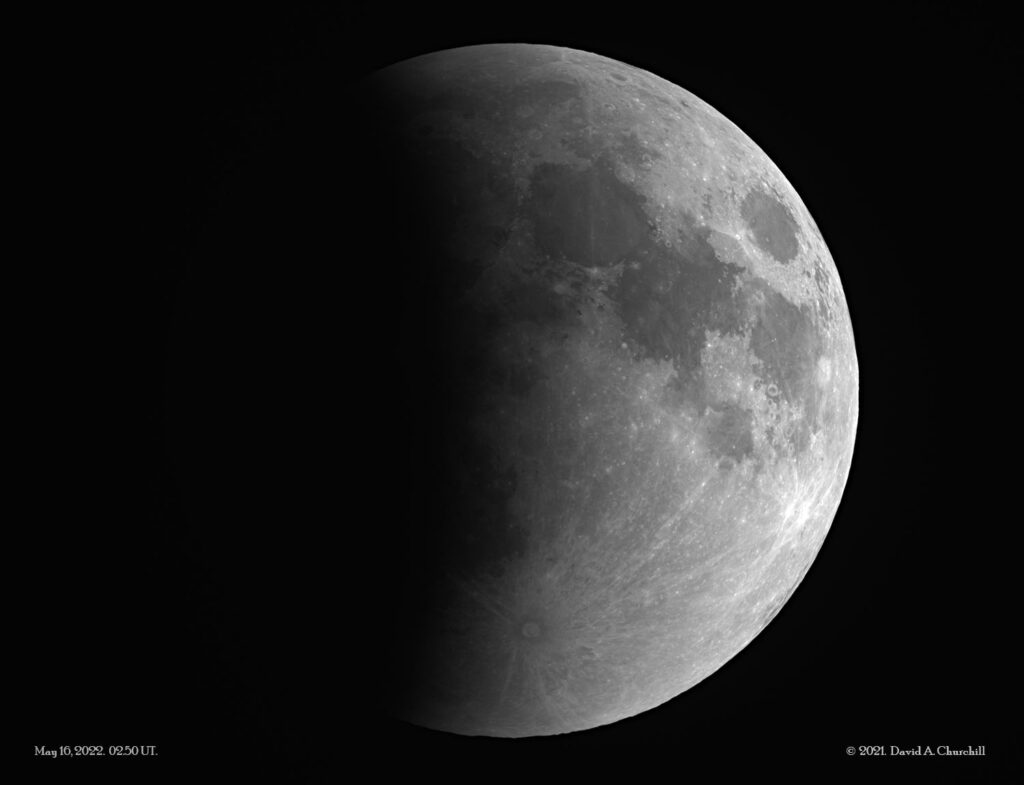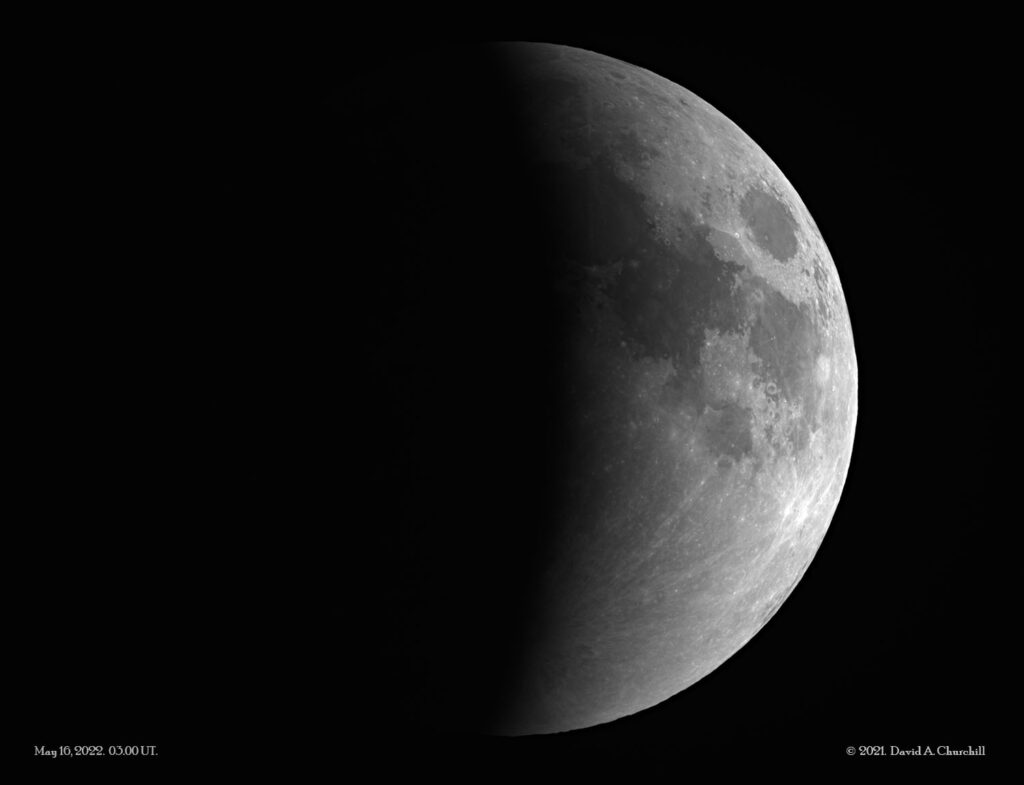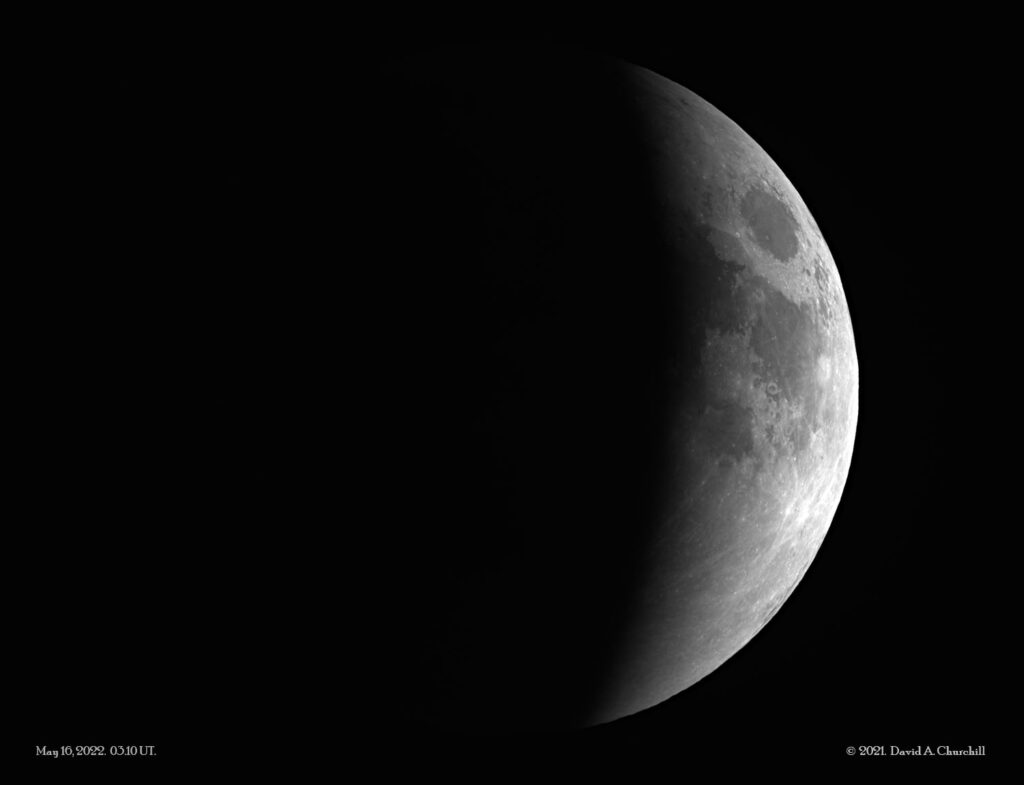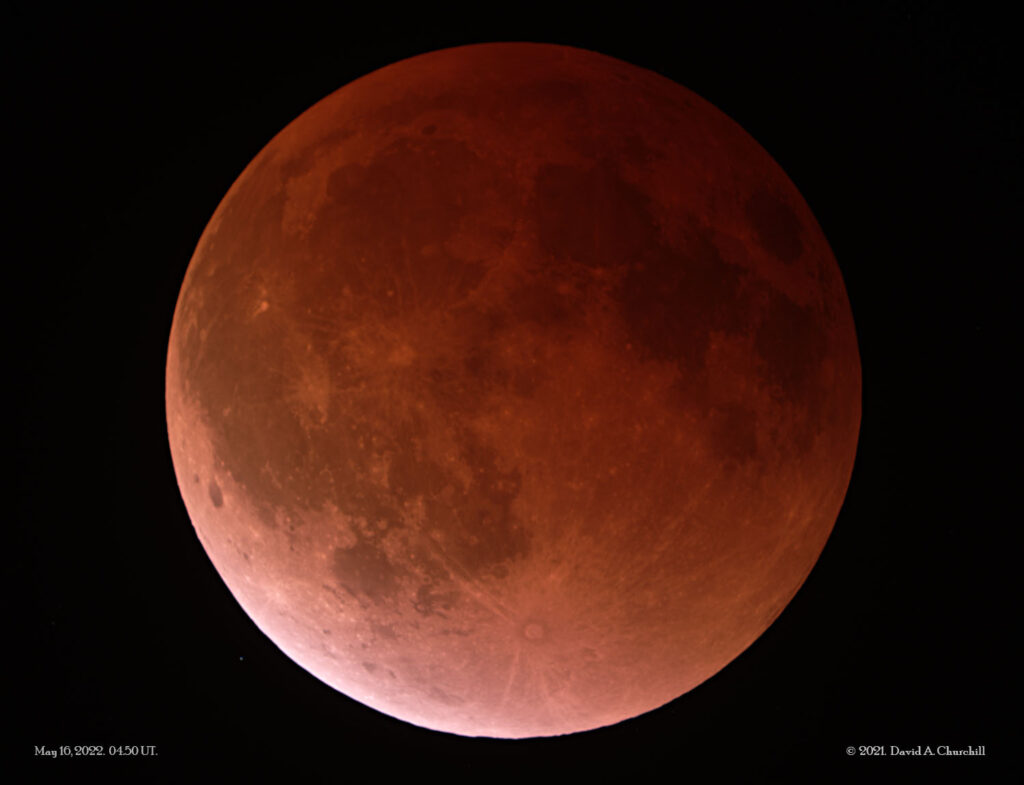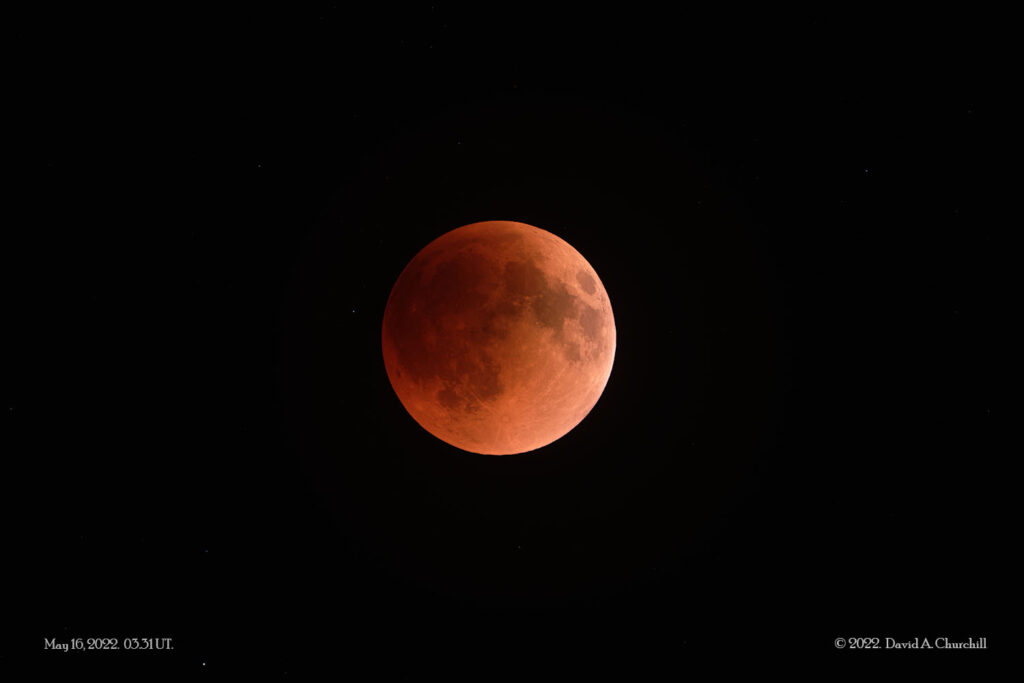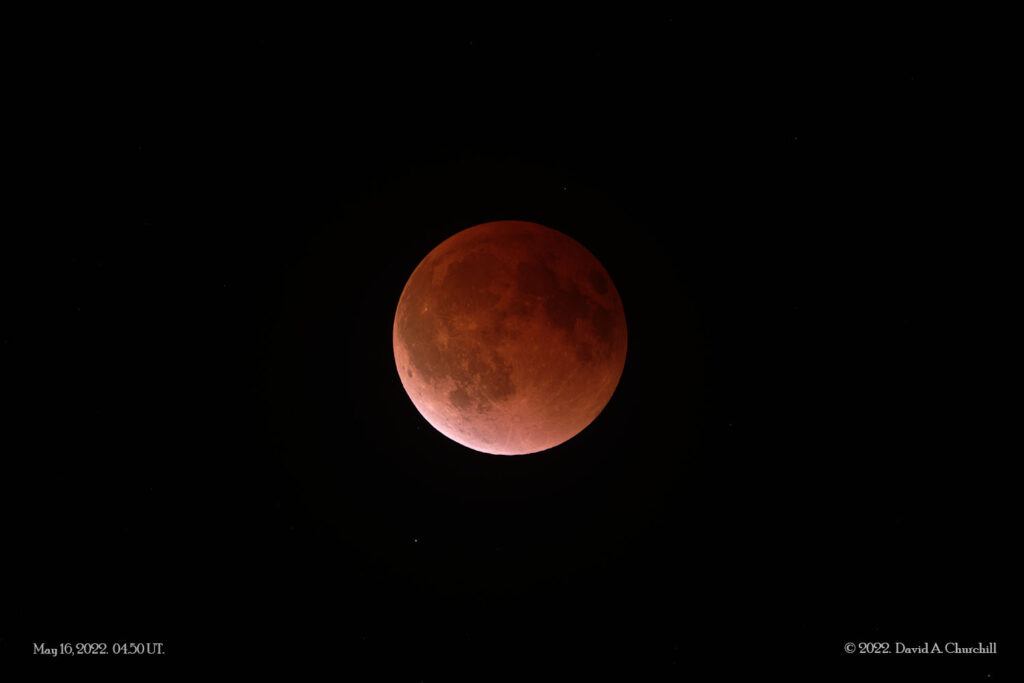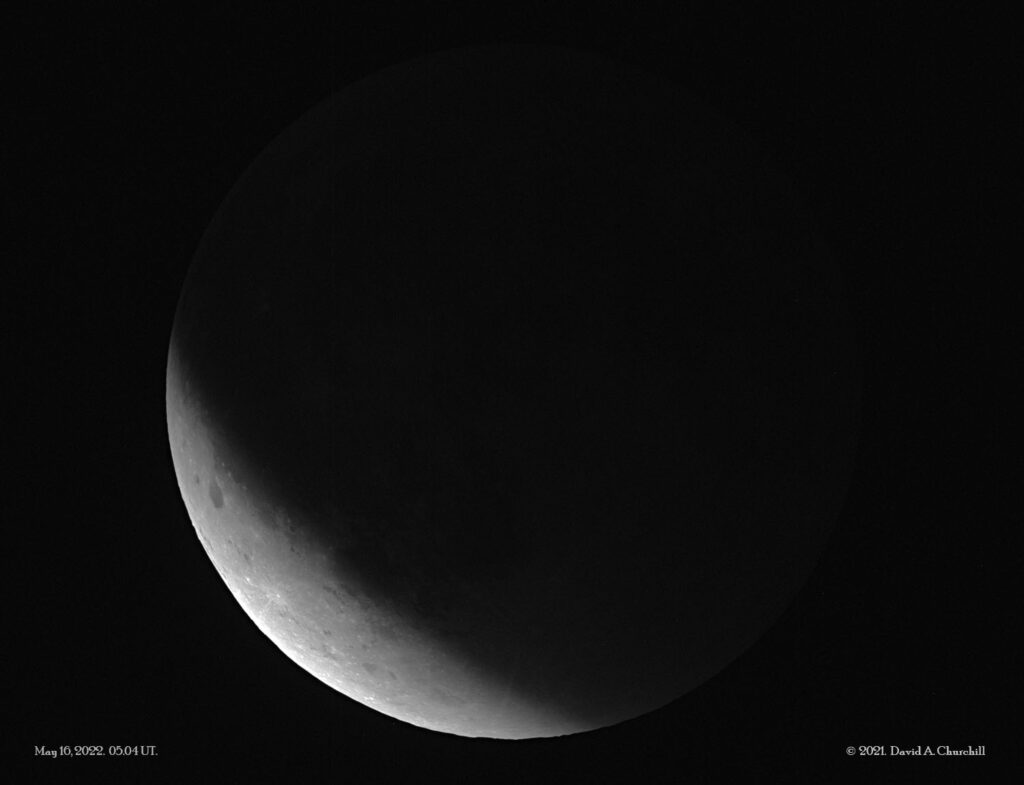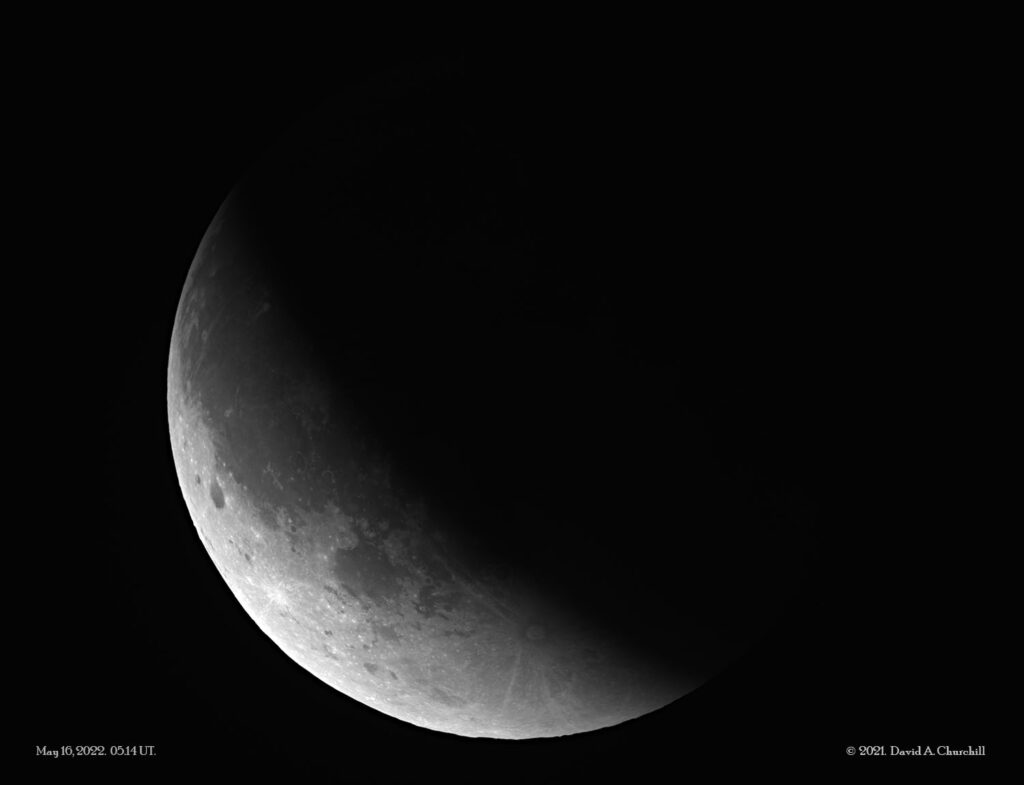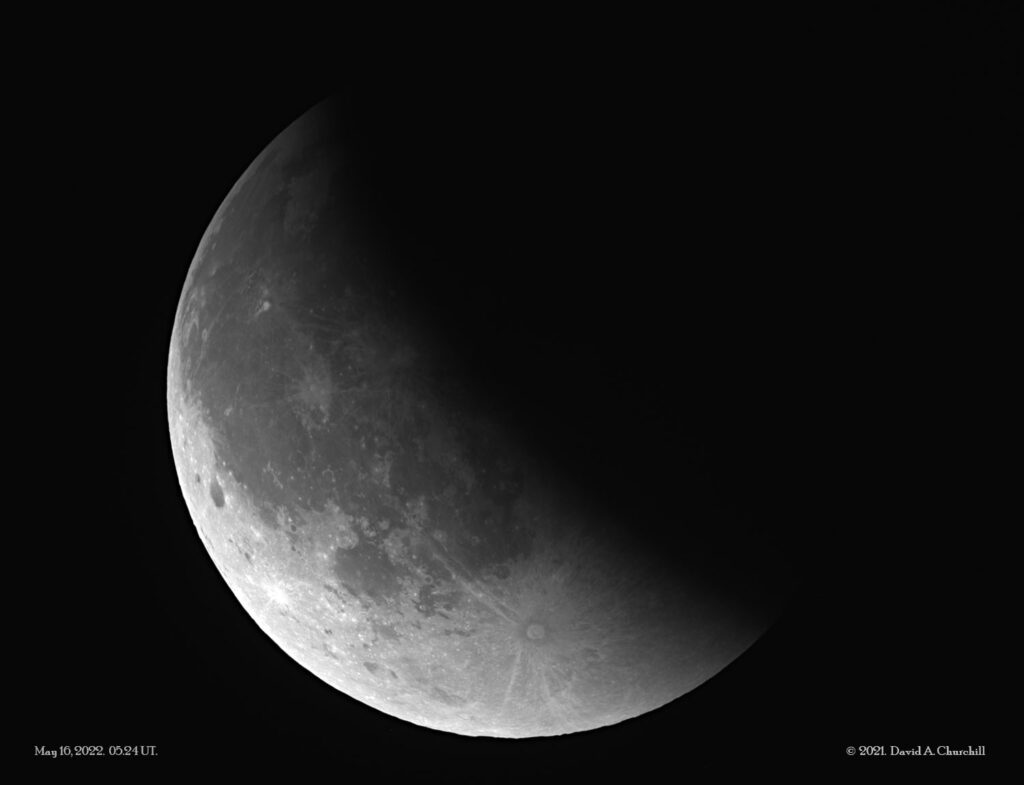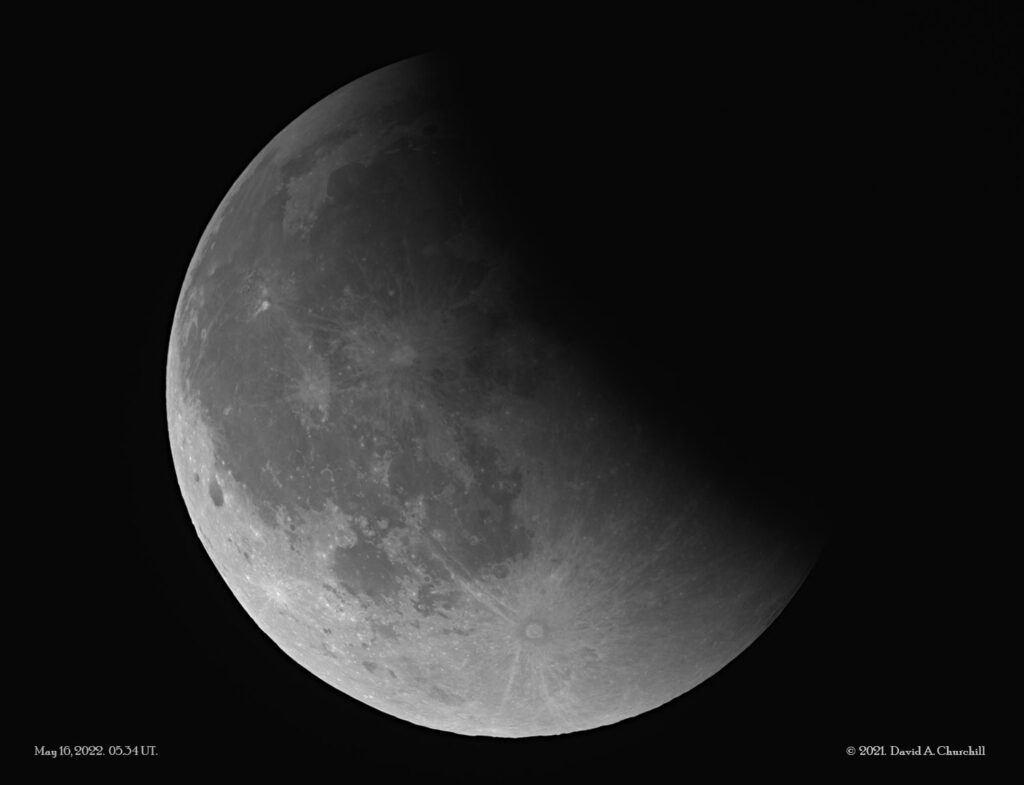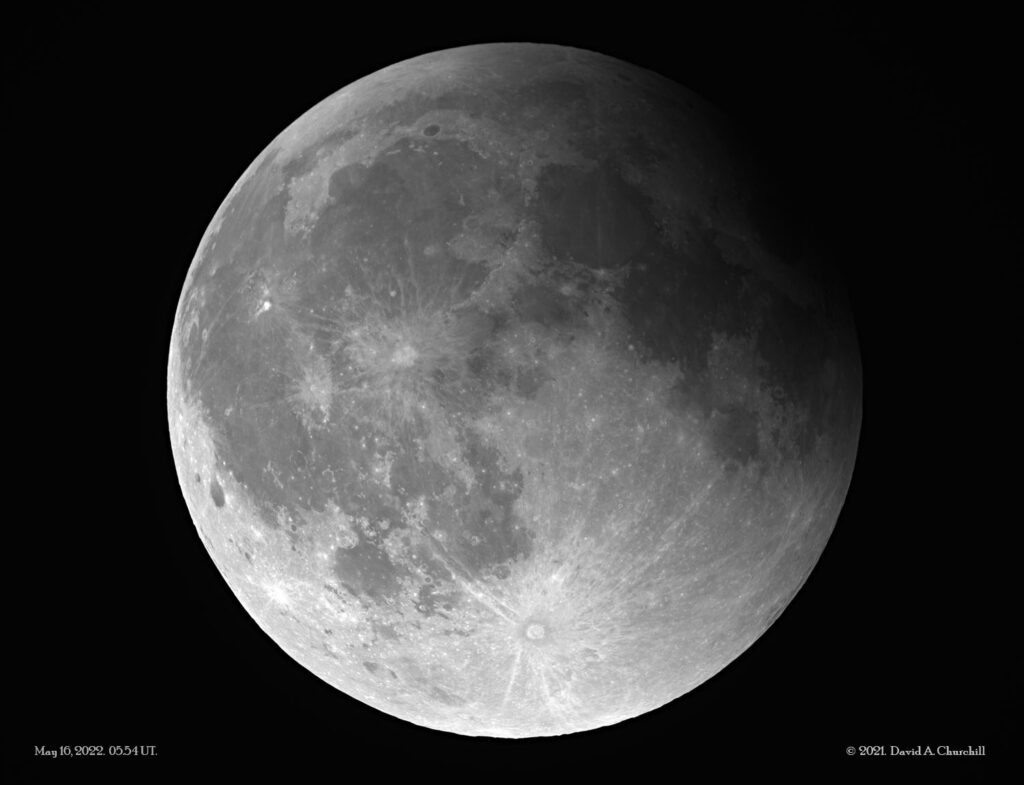Total Lunar Eclipse
2022, May 16
- Overview
- Equipment
- Details
A Total Lunar Eclipse occurs when the Sun, Earth, and the Moon (in that order) line up and the Moon moves entirely through the Earth’s umbra, the darkest part of its shadow.
As well as appearing dark, the Moon appears reddish during maximum eclipse. This is because Earth’s atmosphere bends some of the Sun’s light rays into Earth’s shadow, and because air preferentially scatters the shorter (bluer) wavelengths of that light, it produces a reddening effect while darkening the visible Lunar surface.
Telescope: Astro Physics 155EDF (TCC) f5.4
Mount: Astro Physics 1600GTO
Camera: FLI PL29050 / CFW2-7
Filters: Astrodon II 50mm RGB & 5nm H-Alpha
Total Eclipse: RGB.
Partial Phases: H-alpha Filter to reduce image brightness.
Data Imaged remotely on May 16, 2022.
Imaged from Observatorio El Sauce, Chile, in partnership with Fred Espenak.
Data acquisition & Processing by David Churchill.
Total Lunar Eclipse of 2022 May 16
Greatest Eclipse: 04:11:28.8 UT.
Umbral Magnitude: 1.14137
Saros Series: 131, Member: 34 of 72
Eclipse Contacts: P1: 01:32:07 UT. U1: 02:27:53 UT. U2: 03:29:03 UT. U3: 04:53:56 UT. U4: 05:55:07 UT, P4: 06:50:48 UT.
Eclipse Durations: Penumbral: 05h 18m 40s, Umbral: 03h 27m 24s, Total: 01h 24m 53s

